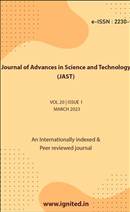Implementation of Construction Management Approach for Improving the Productivity of RMC Plants
DOI:
https://doi.org/10.29070/8d75p278Keywords:
Construction management, Productivity, RMC plants, Mechanisation, Labour-oriented, Capital investment, Fragmented character, Mechanisation levels, Infrastructure, Life cycle costAbstract
Our has historically been labor-oriented. Due to the abundance of cheap labour, lack of capitalinvestment, and the highly fragmented character of the construction sector, mechanisation hashistorically progressed very slowly. Even while most industrialised nations have mechanisation levelsfar above 70, it is still only between 25 and 30 in the United States. Large-scale investments weremade possible by India's economy's liberalisation beginning in 1991 in the areas of infrastructure,industry, housing, and agriculture. For the new-age buildings to have a viable life cycle cost, theyneeded to be completed quickly and to a high standard. In order to align with the overall developmentgoal, the new scenario made it easier to create RMC facilities on a commercial scale and sped up thepace of mechanisation. RMC began operating on a large scale in India in 1993 at a single factory nearPune. It now accounts for around 15 of all concrete produced in the nation. RMC has a stake of up to50 to 60 in several major cities including Bangalore, Hyderabad, Mumbai, and Chennai. If thenecessary assistance is given by the regulatory bodies, customers, and decision-makers during its earlyyears, RMC in India has immense development opportunities. In this project the critical factor causingimproving productivity will indentify.Downloads
References
Ready Mix Concrete: Challenges & Opportunities in India”, Dr. S. K. Dave, Shri N. K. Pandya, Shri B. V. Modi, International Journal of Advanced Research In Engineering ,Science And Management, ISSN : 2394-1766, Vol-11 Issue 12,Page No:01-08
Present technology of ready-mixed concrete and future prospects” M. Takeyama, Muguzine qf Concrete Research, September 1996 Page No: 199-209
Analysis of Sludge Formed in R.M.C Plant” By Arjita Biswas and P.R Adavi, AKGEC International Journal of Technology, Vol. 2,Issue No:12,Page No:60-65.
Failure Mode Effect Analysis (FMEA) Risk Management Technique For Quality Control of RMC Production”, Prof.Jyoti Trivedi, Dr.Chakradhar Iyunni, International Journal of Advance Engineering and Research Development (IJAERD) e-ISSN: 2348 - 4470 , print-ISSN:2348-6406.
A Brief Study of Ready-Mix Concrete: Features & Uses in Construction on the Context of Bangladesh”, Md. Nazmul Haq, Md. Saidur Rahman Chowdhury , Hunain Mahmud , IOSR Journal of Mechanical and Civil Engineering (IOSR-JMCE) e-ISSN: 2278-1684,p-ISSN: 2320-334X, Volume 8, Issue 3 (Sep. - Oct. 2013), Page No: 55-57.
Quantization of risks involved in supply of ready mix concrete in Construction industry in indian scenario”,By Mohd Amir Khan, Shumank Deep, Mohd Asim, Zishan Raza Khan, International Journal of Civil Engineering and Technology, Volume 8, Issue 3, March 2017, Page No:175–184.
A study on customer preferences and perceptions on quality and services of ready mixed concrete as a sustainable building material in Bangalore city, Karnataka”, By L R Manjunatha, Sandya R Anvekar, S Savitha Sagari, Archana Kumarswamy , International Journal of Research in Engineering and Technology, Volume: 03 Special Issue: 06 , May-2014 Page No:07-14
Time Management in RMC Plant” By Prof. S.S. Deshmukh and Yogiraj Lohokare, International Journal for Scientific Research & Development ,Vol. 5, Issue 07, 2017,Page No:267-270.
Qualitative Analysis of Internal And External Risks For Ready Mix Concrete Plants – A Case Study Approach”, By R. C. Walke, Prof. V.M. Topkar, IOSR Journal of Engineering May. 2012, Vol. 2 Issue No: 5 Page No: 1013-1019.






